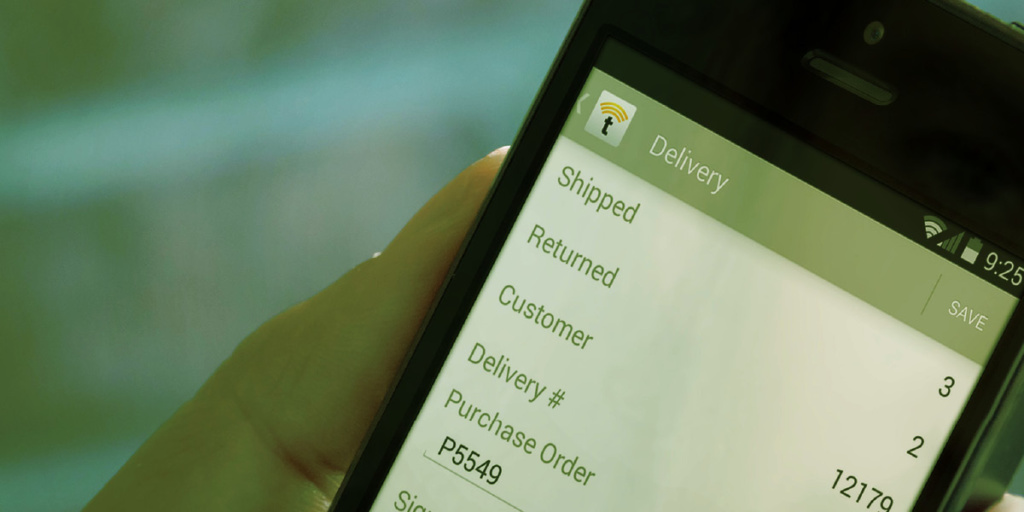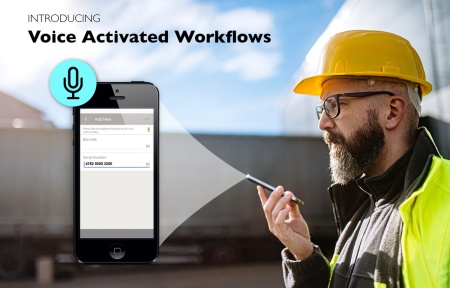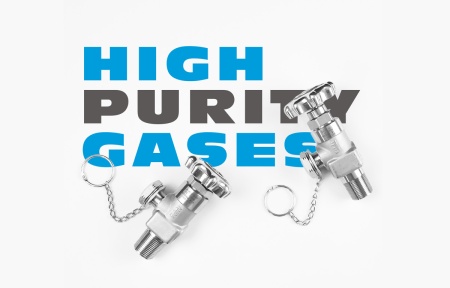You placed an online order for $70 yesterday and just now, your phone pinged with the satisfying notification that your package has shipped. The bottom of the email includes a tracking link. Knowing full well that the package won’t arrive for at least 48 hours, chances are, you click on it anyway.
Why? When you have already ordered and paid for something, it’s just nice to know where it is. It gives you a measure of control, and as a consumer, you have come to expect this level of accountability in any transaction.
Now imagine that you are a distributor with 5,000 cylinders in service, with each one costing $200 or so. Let’s do the math: 5,000 cylinders x $200/cylinder = $1,000,000. That’s a million dollars moving around the world unattended. Wouldn’t you want to know where it is?
As companies grow, their asset investment can increase very rapidly. Robert Anders, CEO and president of Holston Gases, Inc., explained the enormity of cylinder economics at scale: “A new customer requiring 10 cylinders would actually require the addition of 21 cylinders into the system,” Anders explained. “You need to start the customer out with 10 full cylinders, but once empty, they will need another 10 ready and full for the exchange. Add another cylinder to account for losses or failure to meet qualification and you can see that the cylinder investment at scale is enormous. Losses are very small, but certain areas have more losses than others — home health and general contractors on large jobsites moving in and out are two prime examples. You have a lot of moving assets.”
In many cases, the cylinder contents cost a fraction of what the cylinder itself costs, and with increasing steel prices, cylinders and other gas storage systems are becoming even more expensive.
So why isn’t everyone tracking? In the early days, many distributors were hesitant to invest in the technology of cylinder tracking. It seemed expensive, confusing and time consuming. They also worried that tracking might uncover issues in their rental business.
“Some distributors wrongly assumed that meticulous tracking might reveal that they are overcharging for rentals, when in reality, the complete opposite is true,” said Tim Fusco, CEO and co-founder of asset management company TrackAbout, Inc.
“If you overcharge a customer, they will let you know immediately,” Fusco explained. “If you undercharge, no one is going to rush to bring that to your attention. We have found that rental balances actually tend to increase by 10 to 20 percent once a distributor begins tracking.”
In addition to increasing rental income and improving efficiencies, cylinder tracking can also result in better customer service, and in a tight market where you are less able to compete on price, better service can have a big impact on the bottom line. In fact, some customers, such as many universities, now require cylinder tracking in order to secure new contracts.
The Basics of Asset Management
Asset tracking involves the use of a cylinder tag, a reader and tracking software. In the past, handheld readers were expensive and also proprietary, so they weren’t compatible between systems. Today, that is less of an issue. Smartphones and tablets can now be used to read bar codes as quickly as expensive handheld trackers, and the software is user-friendly and can be used for a full range of inventory control, compliance, customer communication and accounting functions. Due to tighter controls on rentals and automation of DOT paperwork and billing, the return on investment is swift and sure.
“Tracking streamlines all of your processes and provides an across-the-board improvement to your bottom line,” said Ryan Dunn of Cee Kay Supply.
Advantages
Asset tracking systems provide the following benefits:
- Quickly and easily locate assets at any time, whether on the loading dock or with a customer
- Increase rental income due to better asset management
- Increase loading efficiency
- Reduce loss
- Simplify billing and quickly resolve cylinder discrepancies
- Improve customer service by ensuring that the correct customer is credited no matter who returns the cylinder
- Monitor use, warranty and maintenance activities
- Improve safety
- Simplify data gathering
- Maintain regulatory compliance
“Automation is one of the simplest methods of improving your bottom line,” said Gayle Smith of Computers Unlimited. “We have just completed a case study in which a customer saved $3.5 million dollars in a single year by moving over to a mobile delivery system.”
Printing barcode labels (using the cylinder serial number) and then labeling/initializing cylinders occurs as the cylinders are returned for refilling. Professionally printed bar code labels are preferred to ensure quality and avoid printing errors.
Smartphones and tablets with asset management software can be used to immediately identify the location of cylinder assets, along with additional information such as frequency of use. This increases accountability in a way that customers appreciate — it identifies cylinders that are not with the customer who is being billed for them or are not in use and should be returned for credit. Administrative efficiencies are also gained because data can be inserted directly into accounting systems and also used to immediately produce required DOT documentation.
What Method Do You Use?
Distributors today have several options when it comes to tracking large quantities of cylinders, including manual counting by unit size and type, bar coding and radio frequency identification transponder tags. The following table compares the features and benefits of all three methods.
In a recent GAWDA Connection Survey, readers were asked what management system they use for cylinder tracking. The majority of companies reported using bar codes, an enormous increase from the previous Welding & Gases Today survey in 2009, when the majority of respondents reported that they still used manual tracking.
In a palletized production plant, the filler can scan the bar codes on the pallet and then associate them with a single pallet bar code while waiting for the cylinders to fill. That way, the driver only needs to scan once to register the whole pallet. Hard goods can be bar coded as well, so even before the driver leaves the distribution center, he/she knows, for example, that three cases of welding wire must be loaded and whether that occurred. The scanning software automatically identifies mistakes such as missing scans or duplicate serial numbers.
No Ordinary Sticker
Early bar code labels were easily damaged due to exposure and abrasion. Today’s cylinder bar code stickers are designed specifically for use in harsh environments. Cylinder bar codes are available printed on rugged polyester material or anodized aluminum. The adhesive is designed to permanently bond to metals, plastics and both textured and contoured surfaces. The labels have excellent resistance to chemicals, abrasion and solvents and are designed to withstand extreme cold, heat and UV exposure. Some bar code labels have an expected life of 20 years or more.
Identifying RFID Tags
Radio frequency identification (RFID) tags offer an advantage in that the data associated with a cylinder (e.g., physical location, contents, customer and requalification date) literally travels with the cylinder. RFID tags can passive, active or a little of both:
- Passive – A passive tag must be powered up by the transceiver before it can transmit data (it draws power from the radio waves beamed by the reader and reflects them back to the reader). Since the radio waves are reflected, the read range is typically limited to less than 20 feet. Passive tags are small, inexpensive and widely used. However, scanning in a metal environment or near liquids can be an issue.
- Active – Active RFID tags are larger because they require a power supply or battery. They are always in operation and useful in applications where distance is a factor. Active tags contain their own radio frequency emitter and act as a beacon that can send information to a reader at any time, allowing for unattended tracking of information such as the type of gas, cylinder location and requalification dates. However, the maintenance costs increase due to the power supply, and they are used less frequently than passive devices.
- Battery-Assisted Passive (BAP) – These devices extend the read range at a lower price point. When the reader sends a signal, it activates the battery in the BAP tag, sending backscatter waves that can be read at longer distances.
Mobile Software Solutions
Tracking systems are linked to web-based and mobile software applications that perform everything from GPS monitoring to accounting functions. This software is available for both Android and iOS operating systems.
“Automation is critical,” said Andrew Kuneth, vice president of Prism Visual Software, Inc. “If you’re not automating your business, you’re missing out on new customers and wasting time in laborious processes.”
According to David Schaer, president of Computers Unlimited, “Cylinder tracking software utilizing smartphone mobile credit card payment technology can streamline and automate the entire ‘order to payment’ process as a means to shorten DSO (days sales outstanding) and labor costs.”
The use of mobile software provides a significant cost reduction both in the field and in the office. Some of the specific advantages provided by cylinder tracking software include the following:
- Mobile cylinder tracking via smartphone or tablet
- Real-time communication with the office for all transactions
- Truck routing and re-routing capabilities
- Ability to make changes to existing orders, receive additional dispatched orders or create new orders in the field
- Monitor and update GPS truck locations, order statuses and customer inquiries
- Invoicing on delivery and mobile credit card payment/receipt eliminates office invoicing and collection labor costs
Telemetry Systems
Telemetry adds another dimension to a cylinder tracking system. These systems are used to collect usage data (such as pressure and liquid levels) at the customer location and transmit it electronically to a distributor to track maintenance and reorders. The system sends an alert to notify users when it is time to change or reorder tanks and also supplies predicted stock depletion dates. In the past, distributors had to travel to multiple locations to monitor pressure and liquid levels, and unexpected usage peaks could result in outages. This was an intensely time-consuming task and resulted in manual input errors, customer discrepancies and emergency gas deliveries at night or on the weekends.
Remote telemetry systems were developed to provide continuous monitoring, but early systems required the physical insertion of pressure or liquid level sensors into the tanks, hard wiring and time-consuming pairing between the transmitter and receiver. The systems were so expensive that they were typically only applied to critical installations and bulk tanks. Today, various types of wireless telemetry systems are available, from simple screw-in devices to advanced LED user interfaces. In addition, digitization has resulted in lower prices that have opened the market to continuous monitoring of smaller tanks and even cylinders.
Here are some of the advantages of modern telemetry systems:
- App alerts signal when it is time to change or reorder tanks and also provide predicted depletion dates
- Easy inventory reconciliation against deliveries
- Optimize utilization of trucks and drivers
- Cost savings in labor hours, operating overhead, stockouts, delays, waste reduction, human errors and excess storage
- Inventory visibility and offloading of gas inventory management tasks
- Competitive advantage
Pulsa Sensors’ Head of Business Development Sam Fatoohi explained that telemetry systems improve efficiency and ensure that customers don’t run out of gas for critical applications. “We’re seeing interest where supply is critical to a process, but gas levels are not often checked, such as in lab deployments, and for medical uses like in dentist and veterinarian offices,” Fatoohi said. “There’s also demand where distributors are looking to improve operations and cut check stops, like for beverage, specialty and other industrial gases.”
Whichever method you choose, continuous monitoring is now an essential component of gas distribution for many customers. According to Vice President of Business Development Amato Spagnoletti at DataOnline, “Complete visibility of tank contents allows you to optimize both logistics efficiency and economics, and most importantly, it ensures that your customers have adequate product and proper tank operation at all times. Additionally, this operational tank data can drive real value to corporate IoT initiatives.”










